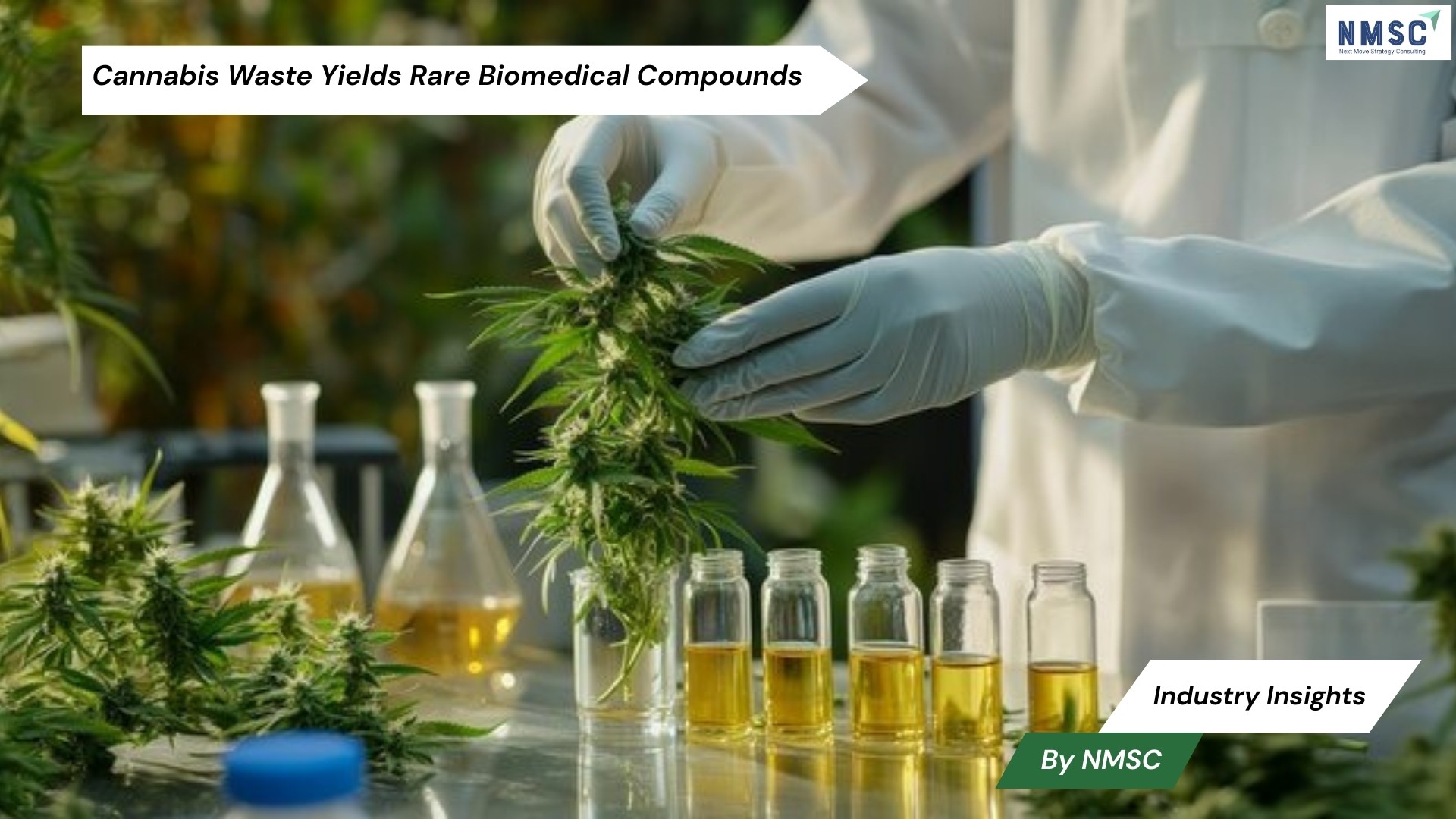Cannabis Waste Reveals Rare Compounds with Biomedical Potential
Published: 2025-09-16

Industry Insights from Next Move Strategy Consulting
For the first time, researchers at Stellenbosch University have identified a previously unreported class of compounds in cannabis, expanding the plant’s chemical landscape and reframing its potential for biomedical research. The findings highlight the presence of flavoalkaloids, rare plant molecules that combine features of flavonoids and alkaloids, discovered in cannabis leaves that are typically discarded as waste.
A Shift Beyond Cannabinoid-Centric Research
Cannabis research has historically centered on cannabinoids such as tetrahydrocannabinol (THC) and cannabidiol (CBD). While these compounds define much of the plant’s psychoactive and therapeutic reputation, far less has been known about its non-cannabinoid chemistry. With more than 750 known metabolites, cannabis remains one of the most chemically diverse plants under scientific study.
“Cannabis is extremely complex,” said Dr. Magriet Muller, an analytical chemist at Stellenbosch. “We did not expect such high variation in phenolic profiles between only three strains, nor to detect so many compounds for the first time in the species.”
Discovery Through Advanced Analytical Tools
To explore the less-studied compounds, the team applied advanced analytical methods previously used in studies of rooibos tea, grapes, and wine. By combining two-dimensional liquid chromatography with high-resolution mass spectrometry, they separated and identified molecules that conventional methods often overlook.
The study, published in ScienceDirect, identified 79 phenolic compounds across three South African cannabis strains. Of these, 25 were newly reported in cannabis, including 16 provisionally assigned to the rare flavoalkaloid class.
Professor André de Villiers, Muller’s study leader, emphasized the importance of the technology: “The excellent performance of two-dimensional liquid chromatography allowed separation of the flavoalkaloids from the much more abundant flavonoids, which is why we were able to detect these rare compounds for the first time in cannabis.”
Impact on Next Move Strategy Consulting’s Cannabis Market
Next Move Strategy Consulting predicts that the discovery of flavoalkaloids in cannabis waste could reshape cannabis market outlook by expanding opportunities beyond THC and CBD, adding economic value to byproducts like leaves, and opening new avenues for pharmaceutical and biomedical research. With advanced analytical tools driving this breakthrough, producers investing in research infrastructure and early adoption may gain a competitive edge, positioning the cannabis market for broader diversification and long-term growth.
Rare Compounds with Untapped Potential
Flavonoids, already well studied for their antioxidant, anti-inflammatory, and anti-carcinogenic properties, have contributed to pharmaceutical development from sources such as tea and grapes. Flavoalkaloids, by contrast, are rarely observed in nature and remain poorly understood.
The discovery also highlights the hidden value of cannabis waste. “Our analysis again highlights the medicinal potential of cannabis plant material, currently regarded as waste,” said de Villiers. “Cannabis exhibits a rich and unique non-cannabinoid phenolic profile, which could be relevant from a biomedical research perspective.”
“Especially the first evidence of flavoalkaloids in cannabis was very exciting,” Muller noted.
Source: THE DEBRIEF
Prepared by: Next Move Strategy Consulting
About the Author
 Pritish Braman is a Digital Marketing Executive with over a year of experience, specializing in content writing and online engagement. He enjoys creating clear, impactful content that connects with readers while also applying marketing strategies to reach wider audiences.
Pritish Braman is a Digital Marketing Executive with over a year of experience, specializing in content writing and online engagement. He enjoys creating clear, impactful content that connects with readers while also applying marketing strategies to reach wider audiences.
About the Reviewer
 Sanyukta Deb is a skilled Content Writer and Digital Marketing Team Leader, specializing in online visibility strategies and data-driven campaigns. She excels at creating audience-focused content that boosts brand presence and engagement, while also pursuing creative projects and design interests.
Sanyukta Deb is a skilled Content Writer and Digital Marketing Team Leader, specializing in online visibility strategies and data-driven campaigns. She excels at creating audience-focused content that boosts brand presence and engagement, while also pursuing creative projects and design interests.
















Add Comment